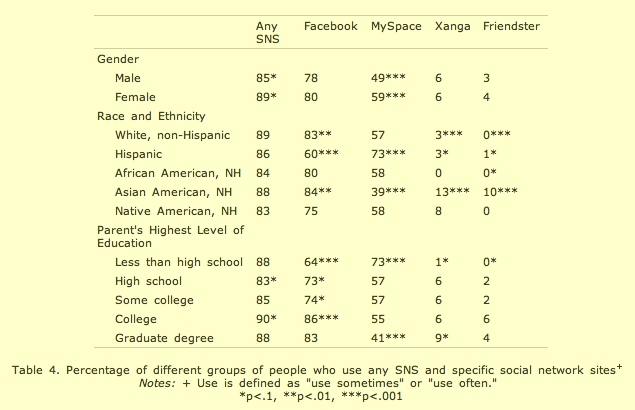 For peculiar business reasons, Americans and Canadians have historically paid to receive text messages (although much of Canada has shifted away from this). This creates a stilted social dynamic whereby a friend forces you to pay $.10 (or use up a precious token msg in your plan) simply by deciding to send you something. You have no choice. There’s no blocking, no opt-out. Direct to jail, do not pass Go, do not collect $200.
For peculiar business reasons, Americans and Canadians have historically paid to receive text messages (although much of Canada has shifted away from this). This creates a stilted social dynamic whereby a friend forces you to pay $.10 (or use up a precious token msg in your plan) simply by deciding to send you something. You have no choice. There’s no blocking, no opt-out. Direct to jail, do not pass Go, do not collect $200.
Needless to say, this alters the culture of texting. From the getgo, Americans have been very cautious about texting. To be on the safe side, many Americans did not add texting to their plan so sending a text message was often futile because it was never clear if a text message would be received by the phone in question or just disappear into the ether. Slowly, mobile users figured out who had SMS and who didn’t, but they were still super cautious about sending messages. It just felt rude, or wrong, or risky.
Teens, of course, never had this filter. They were perfectly happy to text. So much so that their parents refused to get them plans that supported it because, not surprisingly, there were all sorts of horror stories about teens who had texted up $700 phone bills. Sure enough, every family that I spoke with told me their version of the horror story and. In the U.S., we don’t have pay-as-you-go so going over minutes or texts just gets added to your monthly bill. If you’re not careful, that bill can get mighty costly. Unable to declare a max cost upfront, parents have been tremendously wary of teen texting simply for economic costs (although the occasional predator or cheating-in-school scare story does surface). Slowly, things have turned around, primarily with the introduction of cheap all-you-can-eat text messaging plans (and those that are so ridiculously high that it’s hard to go over). Once the barrier to participation is dropped, sending and receiving text messages switches from being potentially traumatic to outright fun. What a difference those plans make in user practice. The brick leash suddenly turns into an extension of the thumb for negotiating full-time intimate communities.
I’m fascinated by how U.S. teens build intricate models of which friends are available via mobile and which aren’t. Teens know who is on what plan, who can be called after 7PM, who can be called after 9PM, who can receive texts, who is over their texting for the month, etc. It’s part of their mental model of their social network and knowing this is a core exchange of friendship.
Psychologically, all-you-can-eat plans change everything. Rather than having to mentally calculate the number of texts sent and received (because the phones rarely do it for you and the carriers like to make that info obscure), a floodgate of opportunities is suddenly opened. The weights are lifted and freedom reigns. The result? Zero to a thousand text messages in under a month! Those on all-you-can-eat plans go hog wild. Every mundane thought is transmitted and the phones go buzz buzz buzz. Those with restrictive plans are treated with caution, left out of the fluid communication flow and brought in for more practical or content-filled purposes (or by sig others who ignore these norms and face the ire of parents).
All-you-can-eat plans are still relatively rare in Europe. For that matter, plans are relatively rare (while pay-as-you-go options were introduced in the U.S. relatively late and are not nearly as common as monthly plans). When a European youth runs out of texts and can’t afford to top up, they simply don’t text. But they can still receive texts without cost so they aren’t actually kept out of the loop; they just have to call to respond if they still have minutes or borrow a friend’s phone. What you see in Europe is a muffled fluidity of communication, comfortable but not excessive. As the U.S. goes from 0 to all-you-can-eat in one foul swoop, American texting culture is beginning to look quite different than what exists in Europe. Whenever I walk into a T-Mobile and ask who goes over their $10/1000 text message plan, the answer is uniform: “every teenager.” Rather than averaging a relatively conservative number of texts per month (like 200), gluttonous teen America is already on route to thousands of texts per month. They text like they IM, a practice mastered in middle school. Rather than sending a few messages a day, I’m seeing 20-50+. College students appear to text just as much as teens. Older users are less inclined to be so prolific, but maybe this is because they are far more accustomed to the onerous plans and never really developed a fluid texting practice while younger.
Whatever the case, it’s clear by comparing European and American practices that the economics of texting play a significant role in how this practice is adopted. It’s more than one’s individual plan too because there’s no point in texting if your friends can’t receive them. As we watch this play out, I can’t help but wonder about the stupidity of data plan implementation. Just last week, I went with my partner to AT&T to activate his Nokia N95. He was primed to add data to his plan because of the potential for the phone, but we both nearly had a heart attack when we learned that 4MB of data would cost $10 and unlimited would cost $70. We walked away without a data plan. More and more phones are data-enabled, but only the techno-elite are going to add such ridiculously costly plans. (And what on earth can you do with only 4MB?) It’s pretty clear that the carriers do not actually want you to use data. The story is even scarier in Europe with no unlimited options. Who actually wants to calculate how many MB a site might be and surf accordingly? And forget about social apps with uncontrollable data counts. There’s a lot to be said about paying to not having to actually worry about it.
 I’m baaaaack. OMG, it was sooo lovely to relax on the beach with friends. Fiction was read (i *really* loved The Glass Castle), Mayan ruins were visited, fishies were viewed through snorkel gear, food was eaten, and there was a lot of hammocking. Glorious glorious be vacation. And now I’m 30 (and 😛 to all of you who pointed out that this means I entered my 31st year).
I’m baaaaack. OMG, it was sooo lovely to relax on the beach with friends. Fiction was read (i *really* loved The Glass Castle), Mayan ruins were visited, fishies were viewed through snorkel gear, food was eaten, and there was a lot of hammocking. Glorious glorious be vacation. And now I’m 30 (and 😛 to all of you who pointed out that this means I entered my 31st year).

